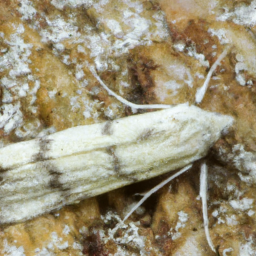Pazaryeri Web Sitesi
Bir çok işletmeyi çatınız altında toplayın, pazarın belirleyeni olun!
*256 Bit SSL Sertifikası * Full Mobil Uyumlu * Full SEO Uyumlu
İsterseniz Mobil Uygulama Seçeneğiyle

Adı : white pine cone borer
Bilimsel Adı : Eucosma tocullionana Heinrich
White pine cone borer (Eucosma tocullionana) is a species of moth that is native to North America. The larvae of this moth bore into the cones of various species of pine trees, causing damage and reducing the number of viable seeds produced by the tree.
The adult white pine cone borer is a small, grayish-brown moth with a wingspan of about 1 cm. It is active from late spring to early fall and is most commonly found in pine forests and other areas where pine trees are present.
Female white pine cone borers lay their eggs on the scales of developing pine cones. Upon hatching, the larvae bore into the cone and feed on the developing seeds. This feeding causes the cone to dry out and drop prematurely, reducing the number of viable seeds produced by the tree.
Infestations of white pine cone borers can significantly reduce the reproductive capacity of pine forests. However, there are several methods of control that can be employed to manage these pests. One approach is to remove and destroy infested cones before the larvae can emerge. Another method is to apply insecticides to the trees during the growing season to kill the larvae before they can bore into the cones.
In conclusion, the white pine cone borer is a pest that can have significant impacts on the productivity of pine forests. Effective management strategies are necessary to prevent or mitigate damage caused by this moth.

Adı : white pine cone borer
Bilimsel Adı : Eucosma tocullionana Heinrich
White pine cone borer (Eucosma tocullionana) is a species of moth that is native to North America. The larvae of this moth bore into the cones of various species of pine trees, causing damage and reducing the number of viable seeds produced by the tree.
The adult white pine cone borer is a small, grayish-brown moth with a wingspan of about 1 cm. It is active from late spring to early fall and is most commonly found in pine forests and other areas where pine trees are present.
Female white pine cone borers lay their eggs on the scales of developing pine cones. Upon hatching, the larvae bore into the cone and feed on the developing seeds. This feeding causes the cone to dry out and drop prematurely, reducing the number of viable seeds produced by the tree.
Infestations of white pine cone borers can significantly reduce the reproductive capacity of pine forests. However, there are several methods of control that can be employed to manage these pests. One approach is to remove and destroy infested cones before the larvae can emerge. Another method is to apply insecticides to the trees during the growing season to kill the larvae before they can bore into the cones.
In conclusion, the white pine cone borer is a pest that can have significant impacts on the productivity of pine forests. Effective management strategies are necessary to prevent or mitigate damage caused by this moth.
Pazaryeri Web Sitesi
Bir çok işletmeyi çatınız altında toplayın, pazarın belirleyeni olun!
*256 Bit SSL Sertifikası * Full Mobil Uyumlu * Full SEO Uyumlu
İsterseniz Mobil Uygulama Seçeneğiyle
